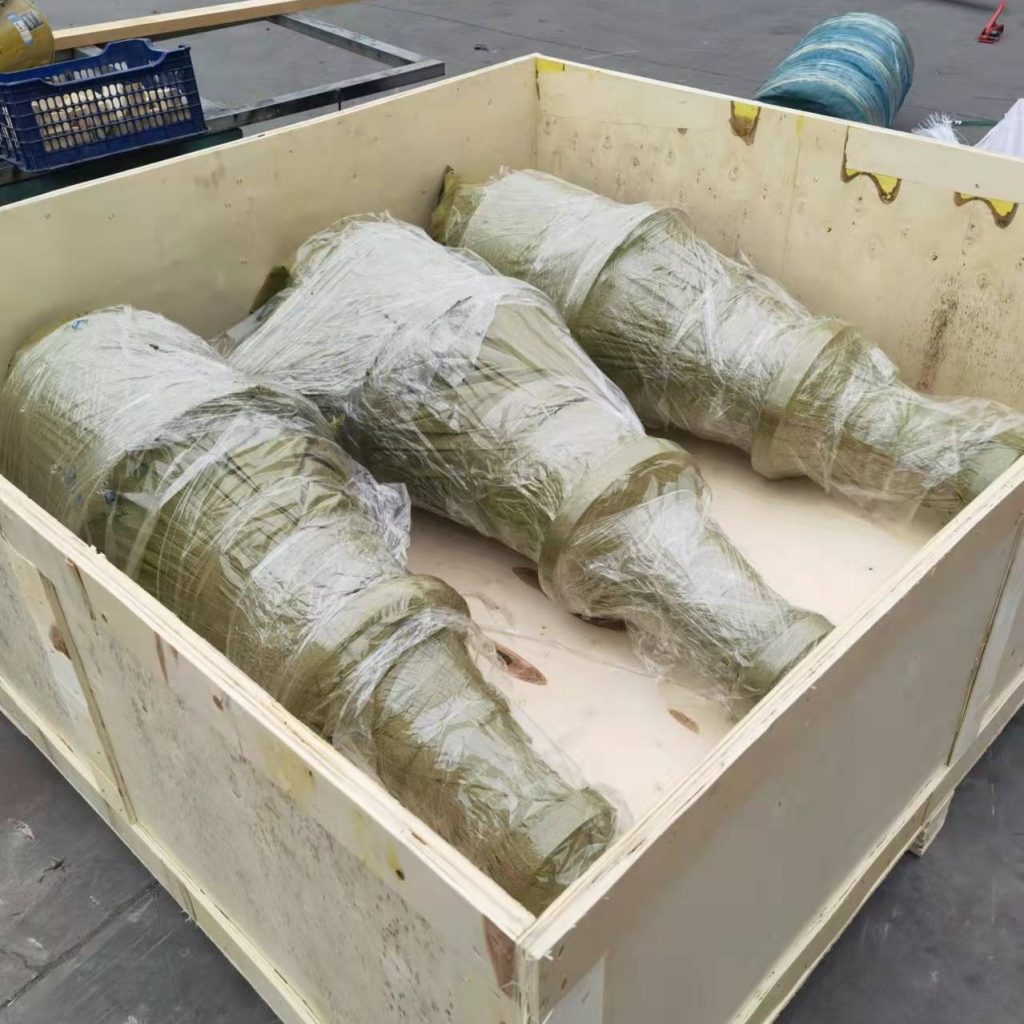
We have shipped 6 pcs hydrocyclones with customized ceramic liners for our regular customers in Korea. Solids control world customizes various materials and sizes of cyclones, feel free to ask the price and samples.
The presence of both downward and upward flow streams indicates the presence of a vertical velocity locus. Both streams have a tangential velocity, which reduces with increasing radius in the outer vortex and increases with decreasing radius in the inner vortex. The equation urn = constant can be used to represent velocity, with n = – 1 in the inner vortex and values ranging from +0.5 to +0.8 in the outer vortex.
The intricacies of the flow pattern, which will often include recirculatory streams, are dictated by the size and shape of the vortex finder, the shape of the chamber into which the feed liquid is injected, and the geometry of the feed inlet.
The resulting centrifugal force is capable of separating particulate materials as small as 5 to 10 microns in size. The higher the force and the more efficient the separation of small particles, the smaller the cyclone’s diameter. There are additional long cone designs that promise to be efficient with particles smaller than 5 microns. A tiny diameter, on the other hand, has a poor fluid capacity, hence most industrial cyclones must be manifolded and connected in parallel.


There are no moving parts in a hydrocyclone.
Although it may seem self-evident that a Hydrocyclone has no moving parts, this fact is sometimes missed during troubleshooting.
Because a Hydrocyclone is made up of a housing, liners, and assembly components, there are just a few things that can go wrong with it.
The main concerns that can be linked back to the Hydrocyclone include foreign debris, lining failure, and faulty assembly. Foreign debris is arguably created by the feed, but it can only be discovered by examining within the Hydrocyclone or at the discharge terminals.
As a common separation and classification equipment, the working principle of the cyclone is centrifugal sedimentation. When the two-phase (or three-phase) mixture to be separated enters the cyclone tangentially from the cyclone periphery at a certain pressure, a strong three-dimensional elliptical strong rotational shear turbulence motion is generated. Due to the particle size difference (or density difference) between coarse particles (or heavy phase) and fine particles (or light phase), the centrifugal force, centripetal buoyancy, fluid traction, and other sizes are different, Most of the coarse particles (or heavy phase) are discharged by the cyclone bottom flow port, while most of the fine particles (or light phase) are discharged by the overflow pipe, so as to achieve the purpose of separation and classification.
We can supply Best Quality of Iron Body Ceramic Liner Hydrocyclone
Please contact us for more details.